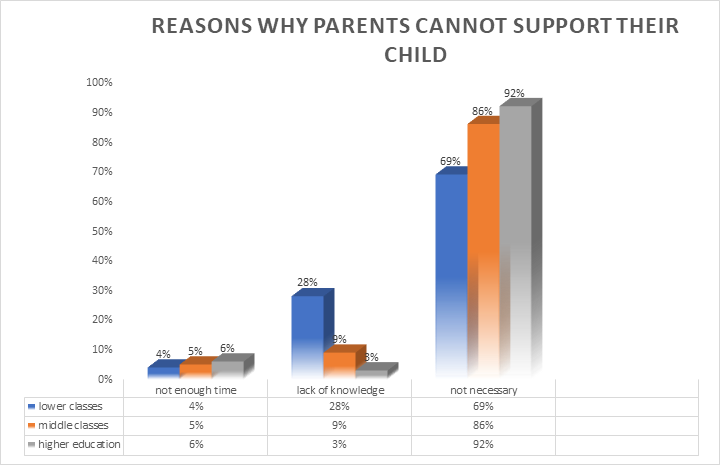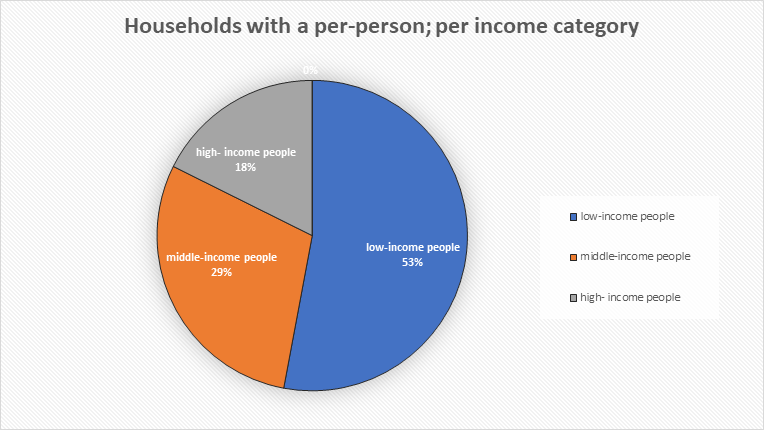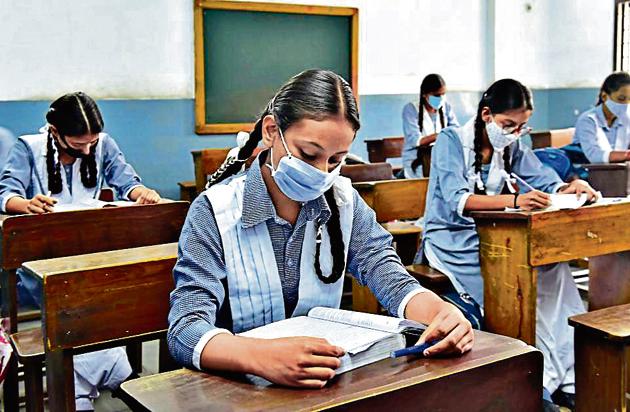A whole generation has seen its education being disrupted. It has caused immeasurable disruption to the lives, learning, and well-being of students around the world. The loss of education resulting from the closure of schools had an impact on the lives of young people, and therefore the economy. Currently, economic recovery is a major goal in terms of public policy; the aim is to ensure that the economy recovers and has as much production capacity as possible.
Student education has shifted from traditional learning to online learning during the pandemic. Many of them took the opportunity to learn online but, some students living in rural areas or who could not afford an internet connection failed to take advantage of this opportunity.
So, let’s dive deeper into knowing online learning compared to traditional learning, and what are the pros and cons of both education methods?
Online learning and its disadvantages to some students
Online education involves taking courses online. Flexibility and ease of use allow students to learn at their own pace without following a rigid schedule.
Learning online is best for ordinary students. However, the desired course can be completed anywhere with the help of an internet connection. This method of study is convenient and affordable for students who cannot attend regular classes.
But there lie some disadvantages to this.
Disadvantages of online learning
- While there are many reasons to start an online education, there are ways to learn more about this.
- You may have little opportunity to join outside activities organized by educational institutions.
- You will not be able to associate yourself with student meetings and help centres.
- Online education does not work in medical institutions. Studying online gives you limited job options and may not give you a college life experience.
- Rural students cannot take online classes due to internet connection problems or are unable to afford them.
Benefits of traditional learning
A) Experience of various campus activities:
- Traditional learning offers a wide range of experiences such as clubs, sports activities, community activities, live conferences, live presentations, cake meals, and many other things.
B) Develop a large- group of networks:
- Physical presence provides communication between teachers and students. In addition, you can meet as many people as to interact. You can set up a great network that helps you find your personality and knowledge.
C)Recognition from level:
- You will receive recognition from the college, board, or university for the suitability of your education. The certificate will give you credibility over the time you spent on getting it. You will receive a certificate even if you have cleared the subject with low marks.
D)Find resources for different activities:
- You will find equipment related to other items needed in your classroom reading lessons.
- Traditional training in the classroom provides a way for communication between students and teachers by raising their hands, asking questions, discussing a particular topic, making a presentation, and many other activities.
E) Qualifications for job opportunities:
- Suppose you want to get some higher degrees like Masters and Ph. D, you can only get degrees after having a bachelor’s degree in a traditional institution such as a university. It is a great way to thrive on the disclosure of colleagues, counsellors, and professors.
Some underlying reasons for school reopening
From an academic and social point of view, it became necessary to reopen schools for the overall development of students. After the decline of the first wave of SARS-CoV-2 infection and the complete shutdown of the economy during March, controversy arose over the need for a partial reopening of schools. The purpose was declared to secure the right to education and prevent the loss of the education gap of students around the world.
According to some reports,
The response of students to remote learning has been very uneven and unproductive.
Reason 1–
- In the first weeks of lockdown, about 30% of students had no job study or communication with their teachers or professors – and most of these students came from low-income homes.
- It is not surprising because family support for personal computer access by students is closely related to the social and economic status of families.
- Parents cannot support their children in studies due to many reasons such as lack of knowledge, household chaos, and many other responsibilities.
These results are consistent with observations made in other countries, such as the United Kingdom and the Netherland.
Figure 1 shows the percentage of why parents cannot help their children to learn: with lower, middle, or higher educations.

Reason 2-
- Not all households have devices.
- People living in poverty or living in rural areas are having difficulty accessing the internet.
- As a result, the division period had a significant impact on the equality of opportunity in the income group.
- The right to education can only be guaranteed by classroom learning or combined teaching.
Figure 2- shows the families of the lower, middle, and higher groups, who cannot access the internet.

Besides these factors, let’s see how the education system emerged the quality of education during covid-19.
FOUR GREAT STEPS IN THE WORLD OF EDUCATION LEARNING DURING COVID-19
1-Accelerating educational inequality:
- Educational inequality is accelerating at an unprecedented rate, especially after the pandemic.
- Even before COVID-19 dropped out of 1.5 billion students in school in early 2019, there was a global concern that education programs in too many countries did not provide quality education.
- It was needed to ensure that all had the necessary skills to succeed. The low-income family group of students in the world bears the burden of online learning, with an estimated 90 percent of students in low-income countries, 50 percent of middle-income, and 30 percent of high-income lacking the basic skills. Only children in the poorest countries are left behind.
However, for a few young people in affluent communities worldwide, learning has never been better than during the pandemic. They are taught in their homes by their favourite friends or by a teacher employed by their parents. Some parents have connected with social media platforms to create learning folders that teach only a few students at a fixed time with agreed schedules and activities.
- According to the US Census Bureau,at the time of the closure of schools during the first wave, 1 in 10 of the low-income family students had little or no access to learning technology.
- UNICEF estimates that 463 million children – at least a third of the world’s population, mostly in developing countries – had no access to distance learning via radio, television, or online content.
2-Leapfrog moment:
- There is an opportunity to identify new strategies, which, if implemented, can help young people get an education that prepares them for changing times.
- This unprecedented acceleration of educational inequality requires new responses. In the ongoing work of innovation in education, it was argued that new strategies or approaches, if promoted, could accelerate, or leapfrog, the progress of education.
Some education experts have suggested that those new features that can help provide learning delivery options are the ones that can help leapfrog education, namely:
1) new teaching methods and specific instructions to help young people not only remember and understand but analyse and create;
2) new ways of seeing learning alongside traditional methods and techniques;
3) overcrowding and space alongside trained teachers to help support school learning; and
4) efficient use of technology and data allowed real-time correction and did not simply replace analogy methods.
The COVID-19 pandemic has forced the learning tendency of education at almost every educational system in the world.
Important- With the help of this, those students who are left deprived of online access may benefit, and a new, equitable education system can get out of trouble. Societies around the world appreciate the role that schools play, not only in student learning but also in the lives of teachers, parents, and others, as discussed below.
3-New educational partners:
- The pandemic has strengthened new social actors — from parents to social organizations — to support students learning more than ever before.
- With the closure of school buildings, teachers began to interact with parents in many different ways; schools formed new relationships with community health organizations and welfare organizations.
- The concept of education supported by a diverse group of people for learning inside the school is not new among educators. Schools remain open all day, and the services of problem-solving are available for both students and teachers.
- One of the opportunities that emerge from the COVID-19 pandemic would be simply the opportunity to harness the power and intelligence between schools and communities to work together to support students learning.
4-Growing community support:
- There is a new public awareness of how important schools are to the community and the window of opportunity to use this support to make them stronger.
- Parents have recognized that schools and teachers are heroes; schools are a place where students learn and develop, fulfil their hopes and dreams, and learn to live like a family.
- The growing number of parents and families worldwide shares the long-standing problems of high-risk families: They urgently need a safe and adequate school to send their children to learn and develop.
- As a result, new stakeholders are getting engaged in supporting the education system.
Now, see what changes have been made in the lives of the students after the school reopened?
7 things students can never see in schools again after covid-19
Home-schooling parents eagerly await when their children will return to school and meet their friends and teachers again. Administrators and education officials are working out a plan for how students and staff can safely return to class.
According to expert research, here are the insights into what may be lost in schools for students after the coronavirus pandemic.
No more large classrooms for students
It’s good news for parents who complain about the large size of the classroom –
This may be a thing of the past. Having 32 students in a class does not seem to be the safest idea now, but how can schools change classroom sizes while still providing equal services to every student? Comments Robert, an assistant professor at Duke University who offers online Assignment Help to students.
Wondering, do they expect students to come at different times, or do they come on alternate days?
The educational team is constantly working to find the best solution. Schools should consider different ways to cut classrooms in half so that social distancing can be feasible.
- The main concern is to provide each student with the same benefits and appropriate care.
No more hassles around the cafeteria
Those golden days are snatched by Covid-19 when lunchrooms filled with screaming children. “When schools bring students in the school premises after reopening, then it became their responsibility to support them with precautions,” said Erickson, who provides Essay Writing Help Services to students, require Assignment help.
Joseph Glatzer, a middle school professor who provides Essay help through Essay writing service providers, thinks students may need to have lunch in small groups in classrooms instead of all of them together in the cafeteria or outside of the classes in open gardens.
No more outside games
Staying at a distance of six meters is not possible while playing any outside sports game. “Classes and formal sports leagues need to be personal and not collaborative to prevent the spread of Covid-19 infection,” said elementary school principal Meredith Escalate, author of The Overly Honest Teacher, who gives Assignment help writing service.
- Sports such as wrestling, soccer, and basketball must be taken into account.
No more school events and sharing of foods
Schools may need to function as business-barren and immovable places, says Escalate, who gives Essay writing services to online students.
- The distribution of food within the walls of the school may be strictly prohibited to avoid possible transmission.
- You will not always be able to see school dances, or events, in the school curriculum.
- The graduation ceremony traditionally requires several hundred students to stand together in the hall. Schools may need to consider other ways to honour their students.
School closure: some myth-busting facts standing between students and education
Many myths are circulating in the world that has caused the shift of education online and school closure.
Today, what stands between students, their education, and the future is not a covid-19, but a mountain of myths:
|
Myths |
Facts |
|
Online is Education |
No, online is not education. Online education can be a great addition; children, especially young ones, do not study online. |
|
Children affected by COVID |
The impact ofCovid-19 in children is rare; less risk than other diseases, even road accidents.
|
|
Students urgently need vaccination for Covid-19. |
For children who are already at low risk, as mentioned above, The long-term safety of vaccines is now unknown. |
| Students are at higher risk in the school auditorium. |
Schools are not the main distributors of Covid infections. Schools contribute much lessto Covid than to other activities; Another 170 countries have opened schools safely. |
| Third-wave is going to hit mainly to children below 20 years age group. |
There are no scientific bases for these claims; most Indians, including children, have already been exposed. So, one cannot say that the third wave will fit most adults and young children. |
Myth 1: Internet education –
- The internet is not education, as evidenced by the above anecdotes. Even pre-pandemic, online learning has been a great addition among young adults and college students. But young students cannot take every source of information by reading online and forget skills.
- The research found that 82% lost at least one mathematical ability, and 92% lost at least one language skill compared to the previous year.
- Even with high broadband connectivity and proper study materials, it was concluded that students had made little or no progress while studying at home.
- Doctors reported that students in India under the age of 5 have been diagnosed with speech problems due to a lack of social motivation and increasing screen time. So, losing a child 1.5 years of age can cause long-term injury.
Myth 2: Children are affected by COVID –
- While the first myth undermines the cost of school closures, the second myth exaggerates the COVID risk of children. Statistics clearly show that the risk of severe COVID in children is less than any other (minor) risks they face in life.
- In children and adolescents, mental health issues resulting from closure and loss of contact with people are more concerned than covid.
- In the 14-19 age group, US figures show a 14% increase in non-covid deaths by 2020, which is due to mental health problems, deaths in this age group are rare.
Myth 3: COVID-19 for children is needed –
- The second myth leads to the third: the COVID-19 vaccine for students is needed before the school reopens.
- They have been unaware of the unusual and long-term effects of vaccines in children for a few years.
Global immunization of students without long-term testing can therefore be likened to medical negligence.
Myth 4: Schools are the main distributors –
- It is a myth that schools are the main distributors. According to studies, it was concluded that schools do not contribute much to the spread of COVID.
- Many countries reopened the schools with safety measures and did not contribute even 1% of Covid-19 infections among students and teachers.
Myth 5: The approaching third wave will affect more children –
- There have been many claims, without a scientific basis, of the third approaching wave affecting children.
- Recent studies have shown that the majority of students have already been exposed to COVID-19. Despite the school closure in many countries, students or young kids are also exposed. You don’t know when and to whom this infection will hit, so you can’t make assumptions by keeping the student’s bright future at risk.
Statistics on the students spend doing different activities during school closure.
Although many children lived in flats (60.3%), with no outdoor space (26.4%) or with small outdoor spaces (37.6%), and 80.8% had no physical spaces (gym or sports areas). Families have agreed to change their policy, especially the family planning organization during this period.
Source
effect of Covid-19 lockdown on the household routines of students
The closure of a school based on this mountain of myths is an injustice done to a whole generation. As a nation, we must be concerned about this. Decision-makers should be concerned that at least some of these children will grow up to write a history of the senseless injustices committed in their generation. If you need any assistance and at any point of time, the professional assignment services are here by your side!
About Author:
Jake Thomson is a contributing writer to LiveWebTutors. He is a podcaster, style coach and has been a blogger and a professional blogger writing about educational skills, personal development and motivation since 2010. He has her own blogging website and well-established blog.

